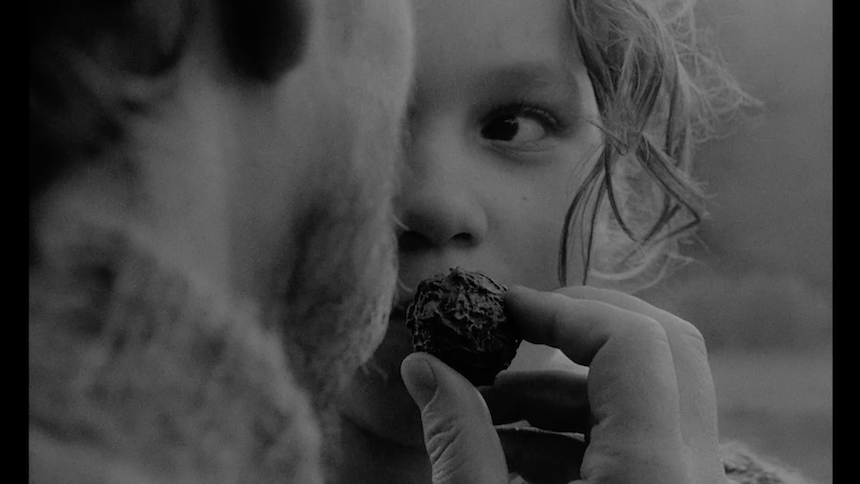TWILIGHT Review: 4K Restoration, Forgotten Hungarian Masterpiece

Hungarian filmmaker György Fehér's seldom seen 1990 masterpiece, Twilight, gets a 4K restoration treatment by the Hungarian Film Institute and distributed by Arbelos.
The LA-based distribution and restoration company is known for their 4K rerelease of such classics as Dennis Hopper's The Last Movie, Matsumoto Toshio's Funeral Parade of Roses, and Wendel Harris's Chameleon Street, as well as fellow Hungarian master Béla Tarr's Satantango and Damnation.
Fehér, who only directed two feature films during his lifetime, was a close collaborator on a number of Tarr's films and shared similar aesthetics. Shot by Miklós Gurban (Werckmeister Harmonies), the film is composed entirely of some 50 long tracking shots. And it is stunning.
A retiring police inspector (Péter Haumann) is called in to investigate the murder of a little girl in a rural town deep in the forest. The local police suspect a traveling salesman, who found the body. But our inspector thinks otherwise.
From the descriptions of the girl's classmates, the killer is a 'giant' in a black coat who lured her with hedgehogs: chocolate balls that resemble the spikey creature. But even before the investigation concludes, a professor ominously warns our inspector that the murderer won't get caught. He even questions the existence of the murderer.
After the suicide death of their only suspect, the inspector sets up a trap, using a little girl and her mother in a remote cottage in the forest as a bait to lure the killer in. But it only exposes the crippling inability to protect the innocents and a man's violent nature.
Based on an existential crime novella, It Happened in Broad Daylight (also the basis for Sean Penn's The Pledge) by Swiss writer Friedrich Dürrenmatt, Twilight paints a morally and physically murky netherworld where innocents get punished and criminals never get caught. You can't pinpoint the time frame in Twilight: the description of the suspect's 'old styled automobile' turns out to be a Volkswagen Beetle.
The apprehending police officers wear long decorative swords on their waists, while the inspector is in his fedora and long raincoat. In its stunning black and white tracking shots in constant rain and fog, the film creates a gray inter-zone, where bad things happen repeatedly, as if time stands still.
There are some show-stopping, memorable long sequences in the film, including one taking place in a classroom full of children looking at the camera as it dollies past them back and forth, foreground/background use of a suspect luring in the girl playing with a ball, and the inspector confronting a suspect as the camera wraps around them 360 degrees. You can instantly recognize that Fehér was in the same school of filmmaking as Tarr. With a sparse soundtrack by Popol Vuh, it's arresting and hypnotic.
Werckmeister Harmonies, released in 2000, was a cornerstone for many cinephiles to experience the art of slow, contemplative cinema. Sure, there were other films with long creeping dolly shots in the past. But Werckmeister was the first one that we really could clearly tell the director's intent on holding each shot, forever. The masterful compositions, oblique dialog, and olitical subtexts all had hypnotic power. It was an amazing cinematic experience and a great introduction to Hungarian cinema.
So the question is, some 30 years later, how does Twilight hold up in a world where people watch films on their phones and streaming platforms, where you could pause and/or fast-forward at any time? I believe Twilight makes a great case for seeing films in theaters again.
With its 4K restoration, the black and white film is gorgeous to look at. Its pacing is refreshingly different than Adderall-induced modern cinema. Let Twilight wash over you. It's blissful.
An exclusive New York engagement begins Friday, April 21, at Film at Lincoln Center, with a ational rollout to follow.
Dustin Chang is a freelance writer. His musings and opinions on everything cinema and beyond can be found at www.dustinchang.com







